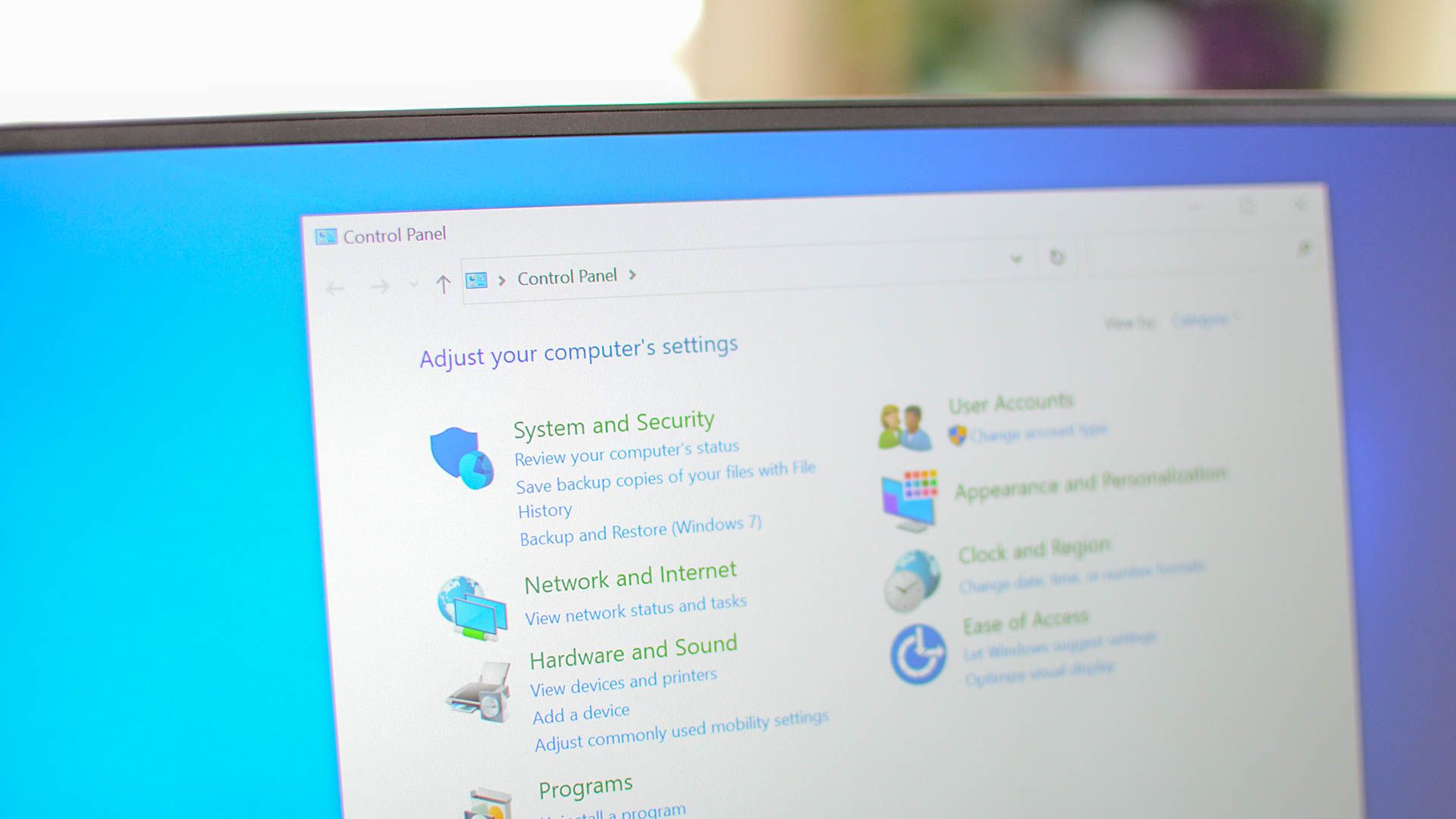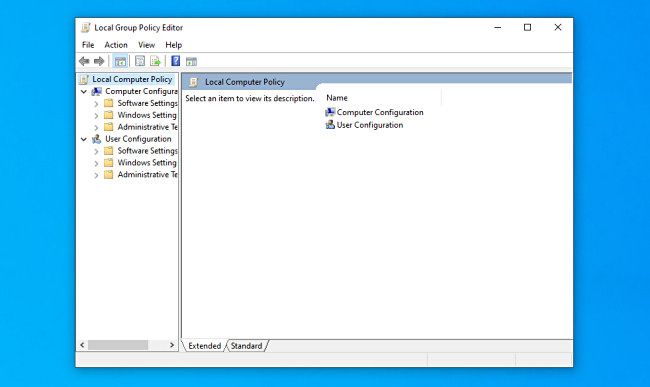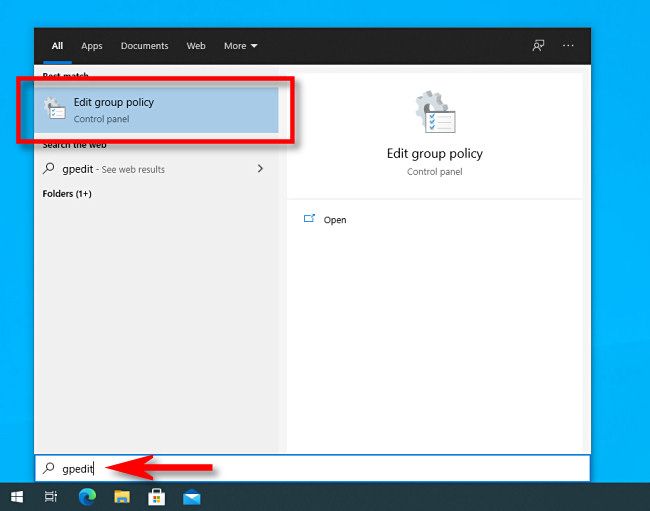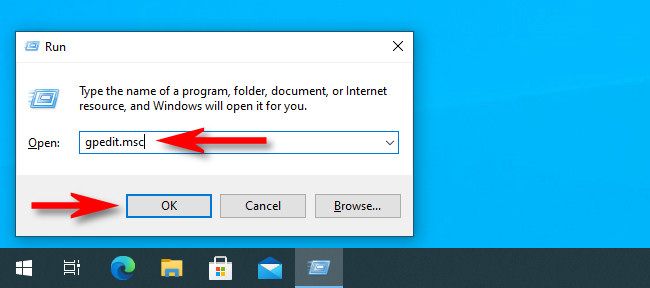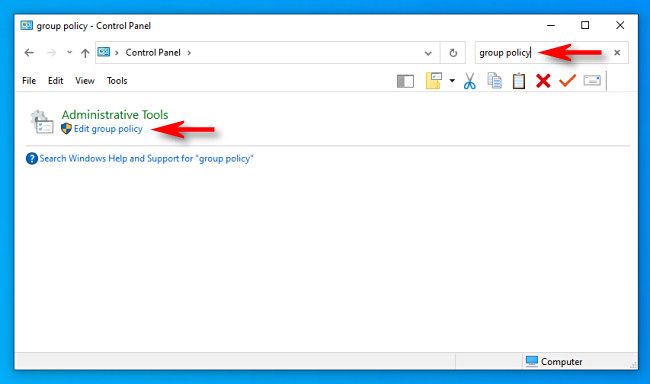Quick Links
Key Takeaways
- Group Policy Editor is a utility that allows you to configure Group Policy settings for Windows PC or a group of PCs, restricting or allowing features as necessary.
- Group Policy Editor is not available in Windows 10 Home, only in Windows 10 Pro or Enterprise editions. To check which edition you have, go to Settings > System > About.
- There are multiple ways to open Group Policy Editor, including through the Start menu, Run window, Command Prompt, or Control Panel. Pick the method that suits you best.
If you need to make deep changes to Windows 10, you sometimes need to open Group Policy Editor, a tool that ships with Windows 10 Pro and Enterprise editions only. Here's how to find and open it.
What Is the Group Policy Editor?
Group Policy Editor is a utility that allows you to configure Group Policy settings for a Windows PC or a group of PCs. Aimed mostly at network administrators, Group Policy defines how you or a group of people can use your machines, restricting or allowing features as necessary.
Group Policy Editor is a Microsoft Management Console app with the filename gpedit.msc, and it's usually located in the "C:\Windows\System32" folder.
It's important to note that Group Policy Editor is not available in Windows 10 Home. It only ships with Windows 10 Pro or Windows 10 Enterprise. If you're not sure which edition of Windows you have, it's easy to find out. Open Settings, navigate to System > About, and you'll see it listed under "Edition."
There are several ways to open Group Policy Editor in Windows 10, so we'll cover a handful of major ways to do it below. Each one will get you to the same place, so pick whichever suits you best.
Open the Group Policy Editor from the Start Menu
Perhaps the easiest way to open the Group Policy Editor is by using search in the Start menu. First, click the Start button, and when it pops up, type "gpedit" and hit Enter when you see "Edit Group Policy" in the list of results.
If you don't see "Edit group policy" in the Start menu results, you either entered a typo or you're running Windows 10 Home edition, which does not include the Group Policy Editor.
Open the Group Policy Editor from the "Run" Window
You can also quickly launch the Group Policy Editor with a Run command. Press Windows+R on your keyboard to open the "Run" window, type gpedit.msc, and then hit Enter or click "OK."
Open the Group Policy Editor from the Command Prompt
If you like working from the command line, open up a Windows Command Prompt and type "gpedit" or "gpedit.msc" on a blank line, and then hit Enter. The Group Policy Editor will open lickety-split.
Open the Group Policy Editor from Control Panel
And finally, we have one of the slowest ways to open the Group Policy Editor: from Control Panel. To do so, launch Control Panel, and then click the search box in the upper-right corner of the window. Type "group policy," and then click the "Edit Group Policy" link just below the "Administrative Tools" heading.
Don't bother trying to browse for the "Edit Group Policy" option in the System > Administrative Tools section, because it isn't listed unless you search for it. It just goes to show how powerful the editor is for Microsoft to hide it away like that, so use great care while changing the Group Policy on your machine. Good luck!

